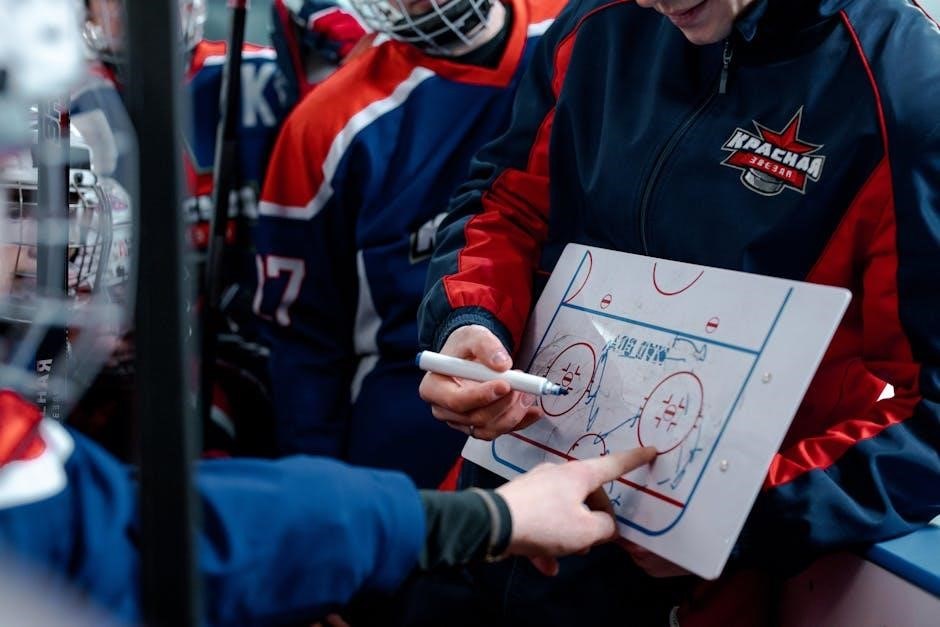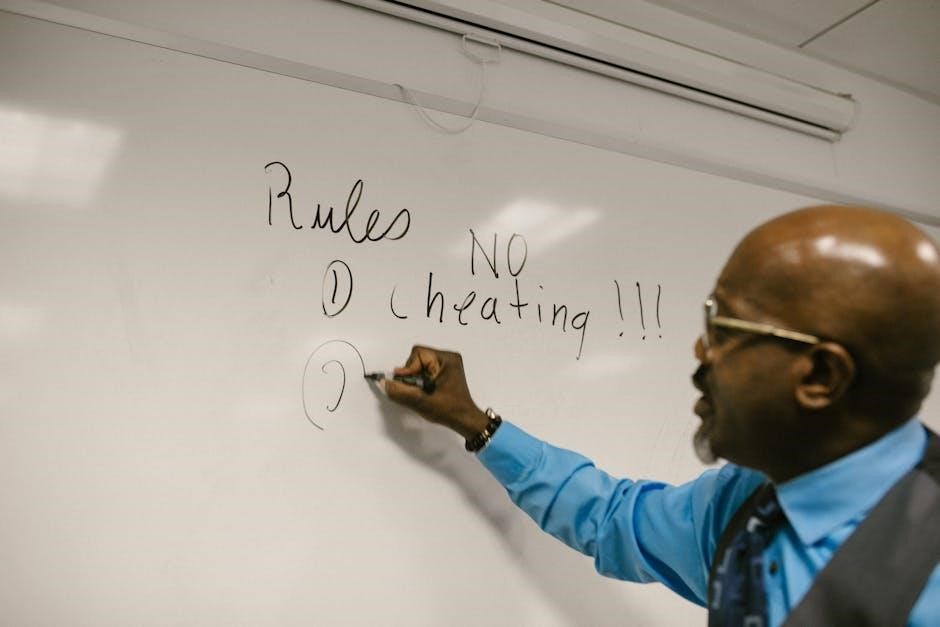Decals are versatile designs for personalizing surfaces like cars, windows, and balloons․ This guide covers essential steps, tools, and tips for applying decals smoothly and professionally․
Understanding the Basics of Decal Application
Decal application involves transferring a design onto a surface using vinyl or similar materials․ Start by cleaning the surface thoroughly to ensure proper adhesion․ Use soapy water to wet the area, then apply the decal, starting from the center and smoothing outward with a squeegee to avoid bubbles․ Allow 24-48 hours for the decal to set․ Tools like masking tape, scissors, and a credit card can aid in positioning and smoothing․ Patience and precision are key for a professional finish․ This method works for various surfaces, including cars, windows, and balloons, making decals a versatile way to add personal touches․
Cleaning and Preparing the Surface
Clean the surface with soap and water to remove dirt, oils, and contaminants․ Dry thoroughly to ensure proper decal adhesion․ Avoid harsh chemicals that may damage the surface․
Importance of a Clean Surface for Decal Adhesion
A clean surface is crucial for proper decal adhesion, as dirt, oils, or contaminants can prevent the decal from bonding securely․ Ensure the area is free of dust, grease, and old adhesives․ Use mild soap and water to clean, then dry thoroughly․ Avoid harsh chemicals that might damage the surface or interfere with adhesion․ A well-prepared surface ensures the decal adheres evenly, reducing the risk of peeling or bubbling․ Proper cleaning also extends the decal’s lifespan, making it more durable against environmental factors like moisture or UV exposure․ Always inspect the surface before applying the decal for optimal results․

Preparing the Decal
Cut the decal to size, ensuring excess material is removed․ Apply transfer tape carefully, smoothing out air bubbles․ For multi-colored decals, align layers accurately before final application․
Cutting and Taping the Decal for Application
Start by cutting the decal along the edges, ensuring it matches your desired size․ Use a sharp utility knife or scissors for clean cuts․ Next, apply a strip of masking or transfer tape along the top edge of the decal, pressing firmly to secure it․ This tape acts as a hinge, allowing you to align the decal properly on the surface․ For intricate designs, cut the decal into smaller sections, making it easier to handle and apply without wrinkles or bubbles․ Proper cutting and taping ensure a smooth, bubble-free application․
Applying the Decal
Apply the decal using soapy water and a squeegee․ Start from the center, pushing outward to remove air bubbles․ Ensure a smooth, bubble-free finish with even pressure․
Using Soapy Water and Squeegee for Bubble-Free Application
Soapy water is a key component in achieving a bubble-free decal application․ Mix a small amount of mild detergent with lukewarm water in a spray bottle․ Lightly mist the surface where the decal will be applied to create a slippery base․ Position the decal carefully, ensuring it is centered and aligned․ Use a squeegee or credit card to gently press from the center outward, applying even pressure to push out air bubbles and excess water․ This method ensures a smooth, professional finish without wrinkles or trapped air pockets․

Common Mistakes to Avoid
Avoid applying decals on unclean surfaces, as dirt and dust hinder adhesion․ Ensure the surface is dry and free of contaminants for optimal results․
Preventing Wrinkles, Bubbles, and Misalignment
To avoid wrinkles, ensure the decal is applied smoothly and evenly․ Use a squeegee to press out bubbles, starting from the center and moving outward․ For misalignment, use masking tape to secure the decal’s top edge before applying․ Apply soapy water to reduce friction, allowing the decal to slide into position․ Once aligned, press firmly and wipe away excess water․ Avoid stretching the decal, as this can cause distortion․ Proper preparation and patience are key to achieving a professional finish without wrinkles, bubbles, or misalignment․

Tools and Materials Needed
Essential tools include a squeegee, masking tape, soapy water, and a clean cloth․ Additional items like scissors, a pencil, and a credit card can aid application․
Essential Items for a Successful Decal Application
To ensure a smooth decal application, gather the following items beforehand:
– A clean, lint-free cloth or paper towel for surface preparation․
– A spray bottle filled with soapy water to prevent air bubbles․
– A squeegee or credit card to apply even pressure and remove excess liquid․
– Masking tape to secure the decal during alignment․
– Scissors or a craft knife to trim excess vinyl․
– A pencil for marking placement guides on the surface․
– A well-lit, dust-free workspace to minimize contaminants․
These tools will help achieve a professional-looking finish without wrinkles or bubbles․
Applying Decals to Different Surfaces
Decals can be applied to various surfaces, including cars, windows, and balloons․ Each surface requires specific techniques to ensure proper adhesion and a smooth finish․
Specific Instructions for Cars, Windows, and Balloons
For cars, clean the surface thoroughly and use a squeegee with soapy water to avoid bubbles․ Apply decals to flat areas like windows or doors․ For windows, ensure the surface is dry and free of dust for optimal adhesion․ Balloons require a gentle touch; apply heat with a gun to conform the decal to the curved surface; Always align decals carefully and smooth out air bubbles immediately․ Allow 24-48 hours for the adhesive to set fully before exposure to water or sunlight․

Aftercare and Maintenance
Avoid exposing decals to water or direct sunlight for 48 hours․ Clean gently with mild soap and water․ Avoid harsh chemicals or abrasive materials to ensure longevity;
Ensuring Longevity of the Applied Decal
To maintain your decal’s appearance and durability, avoid harsh chemicals, abrasive cleaners, or scrubbers․ Regularly clean with mild soap and water, and avoid prolonged exposure to direct sunlight․ For decals on vehicles, avoid high-pressure washes․ On windows, ensure the glass is free from contaminants․ For balloons, handle gently to prevent stretching or abrasion․ Allow the decal to set for 24-48 hours after application before exposing it to water or stress․ Proper care will ensure your decal remains vibrant and intact for years, whether on cars, windows, or other surfaces․
Advanced Techniques
Master multi-colored decals using registration boxes for alignment․ Achieve realistic renders with detailed layering and shading techniques․ These methods enhance visual appeal and professionalism in decal applications․
Multi-Colored Decals and Realistic Renders
Creating multi-colored decals involves layering vinyl sheets and aligning them precisely using registration boxes․ This technique ensures vibrant, intricate designs without overlapping or misalignment․ For realistic renders, use gradient effects and detailed shading to mimic textures like metal or fabric․ Tools like Lumion can enhance 3D realism in digital decals․ When applying multi-colored decals, apply each layer separately, starting from the base color․ Use transfer tape to secure layers and squeegee for bubble-free adhesion․ Allow 24-48 hours for the decal to set before use, ensuring durability and longevity on surfaces like cars or windows․

